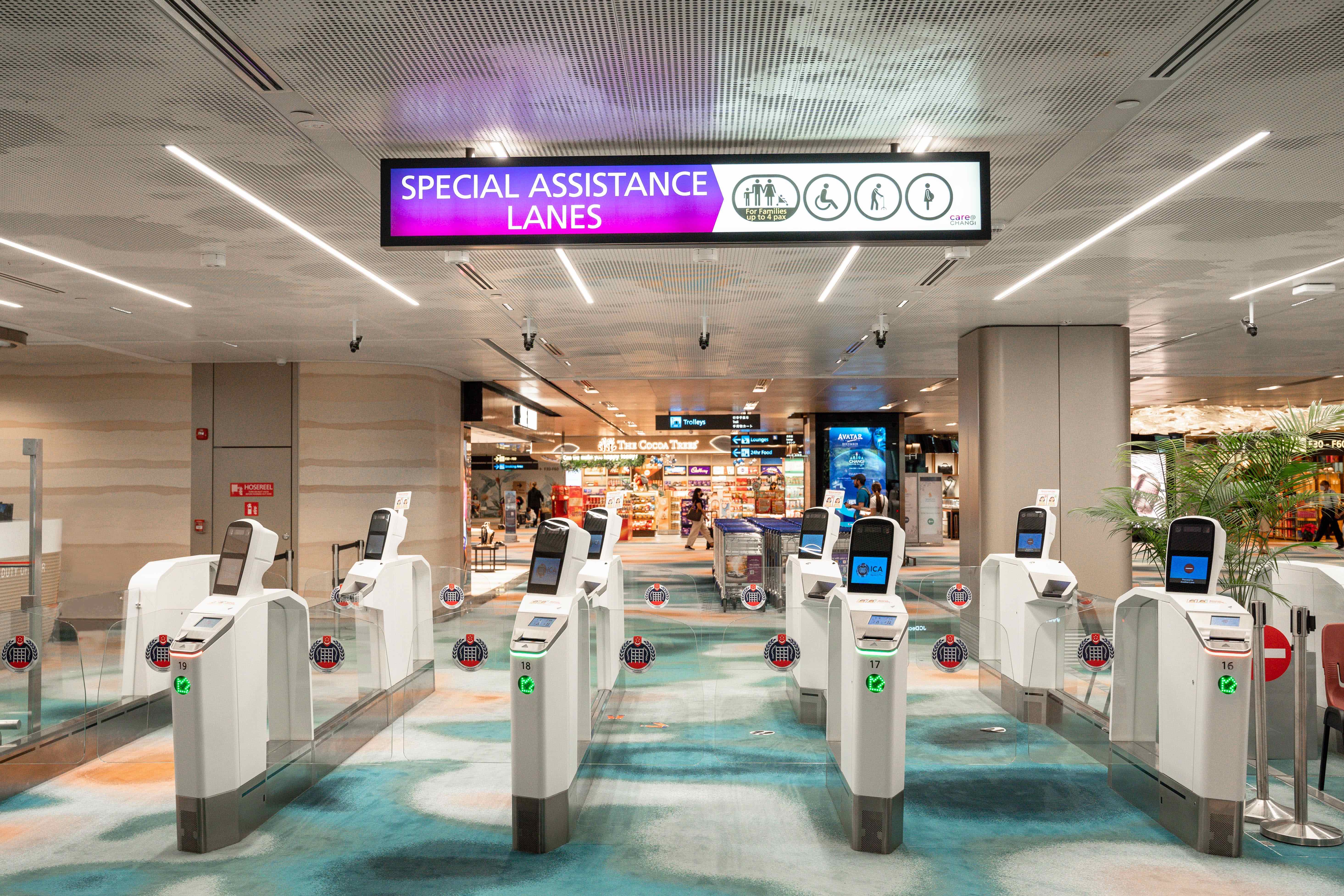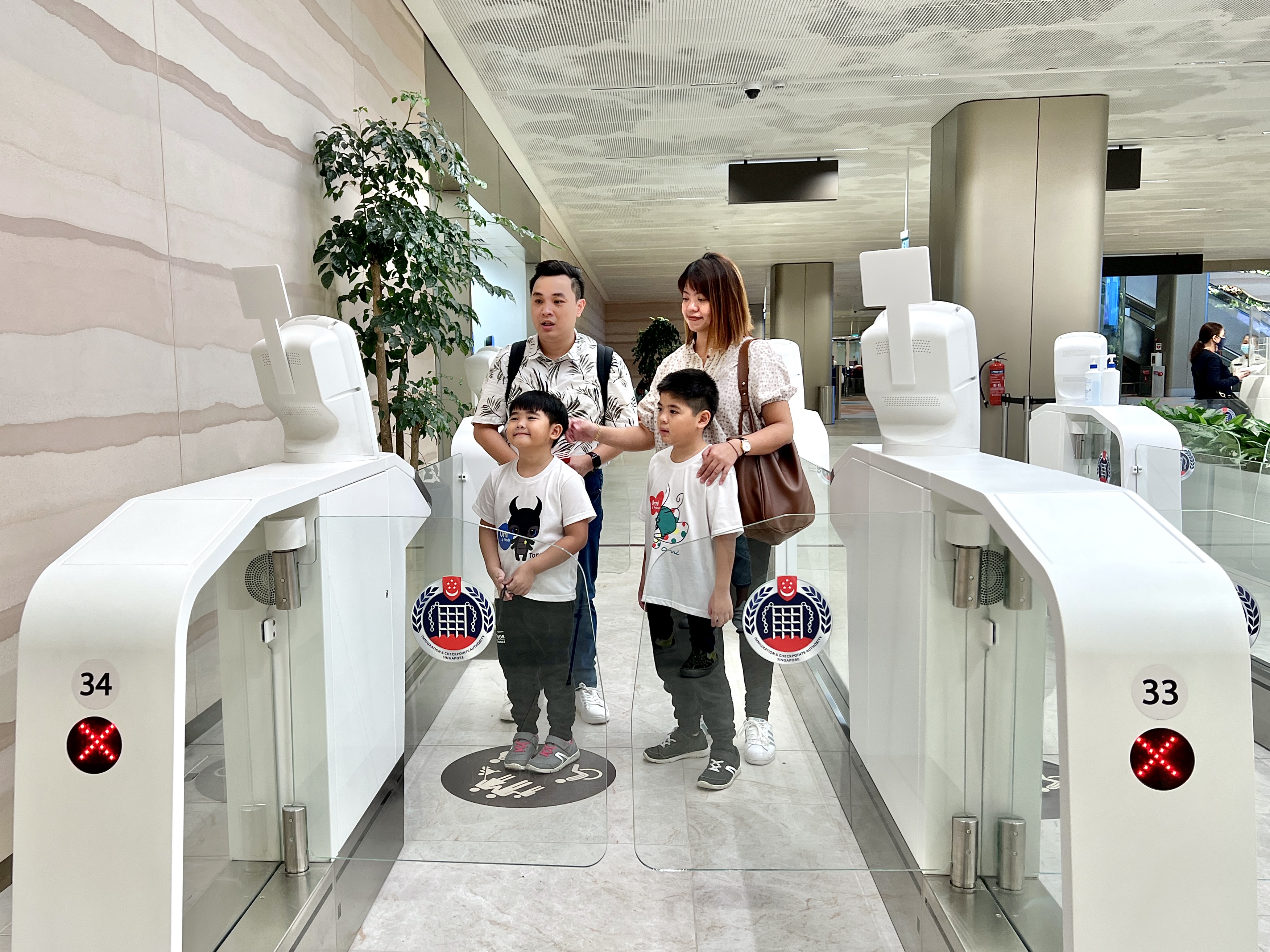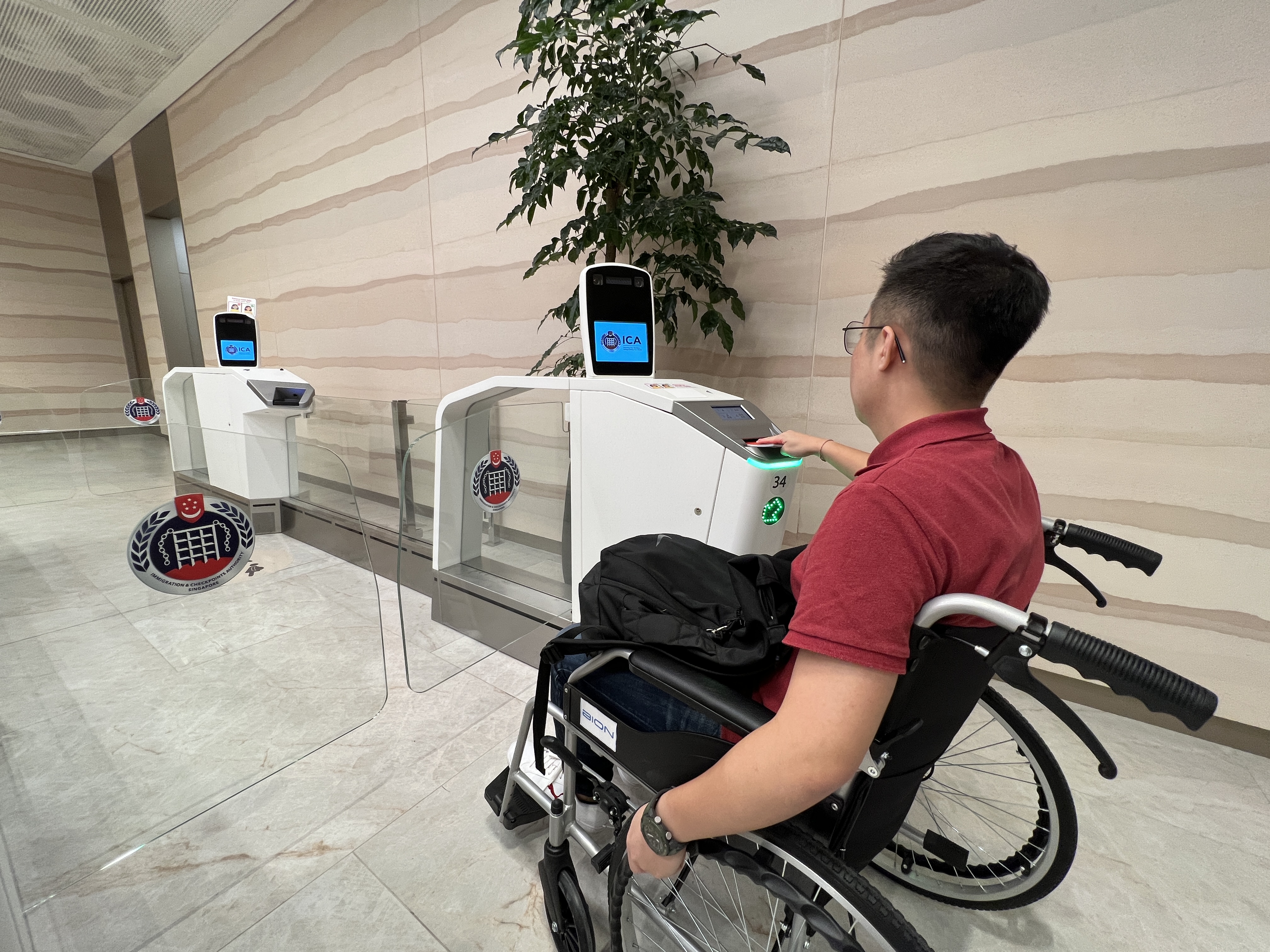The Special Assistance Lane initiative allows family groups and travellers using wheelchairs to enjoy seamless self-clearance.
Singapore is the first country in the world to introduce an automated lane that allows multiple travellers to perform immigration self-clearance as a group. (Photo: ICA)
Family groups of up to four people or travellers using wheelchairs can now enjoy the convenience of automated immigration clearance with the new Special Assistance Lane (SAL) that has been introduced at selected passenger halls in Changi Airport.
According to Immigration & Checkpoints Authority (ICA), Singapore is the first country in the world to introduce an automated lane that allows multiple travellers to perform immigration self-clearance as a group. The initiative is part of ICA’s New Clearance Concept (NCC) to make automated immigration clearance the norm at the checkpoints.
Instead of going to manual counters for immigration clearance, travellers using wheelchairs and family groups (up to four persons), e.g. families with young children, can now perform self-clearance by scanning their primary biometric identifiers such as iris and facial using the SAL.

A family group taking turns to present their biometrics for immigration self-clearance using the Special Assistance Lane. (Photo: ICA)
Innovation through collaboration
The development of the SAL was a collaborative effort between ICA, HTX and Changi Airport Group (CAG).
Engineers from HTX’s Immigration and Checkpoints Programme Management Centre (ICPMC) worked closely with ICA and CAG to conceptualise the SAL to ensure that it was designed to meet the needs of travellers using wheelchairs and family groups.
Design thinking workshops, virtual reality simulations, as well as controlled lab and trials involving members of the public were conducted to determine the optimal design for the SAL.
A traveller on wheelchair scanning his passport at the Special Assistance Lane. (Photo: ICA)
The ICPMC team, which was the overall project manager for the SAL initiative, also engaged the various centres of expertise at HTX, such as Human Factors & Simulation, on design considerations to enhance the functionalities and ergonomics of the SAL. This included the width and depth of the lane, placement of the passport and biometric scanners, as well as the height and angle of the display screen for standing and sitting travellers.
An in-house group traveller detection demo algorithm and test scenarios were also developed by engineers from HTX’s Biometrics & Profiling Centre of Expertise to evaluate the feasibility of automating group traveller detection.
“At HTX, we are using technology to help the Home Team frontline officers as well as enhance the immigration clearance process for travellers at the checkpoints, especially for those who need extra help. Whether you’re a family with young children or a person using a wheelchair, the SAL is a convenient, easy-to-use, and seamless way for immigration self-clearance,” said Kamal Raja Mat, Deputy Director, ICPMC, who was involved in the SAL project from conceptualisation to implementation.
“We will continue to innovate and leverage technology to refine the SAL and improve the user experience,” Kamal added.
Watch a video about the Special Assistance Lane (Source: ICA):
This project won the 2024 Home Team InnovA Project Commendation award.

![[FEATURED NEWS] Sailing through immigration clearance without passports](/Cwp/assets/htx/images/listing-card-placeholder.png)